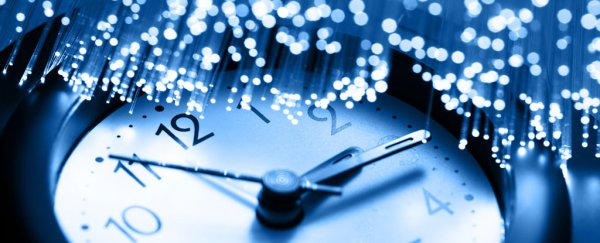The question of how exactly we experience the world through our perception of consciousness is one that's long intrigued scientists and philosophers. And at its core are two divergent hypotheses.
On the one hand, it could be that consciousness exists as a constant, uninterrupted stream of perception, like how it feels to watch a movie. You sit down with your popcorn and experience a film from beginning to end in one continuous flow, unaware of any segmentation or breakup as you go.
But another hypothesis of consciousness reflects what a film technically is: a series of individual frames of time stitched together into a reel that – when played back – appear seamless. So which is it? Is consciousness a seamless film, or is it a reel composed of discrete moments?
According to a new study by Swiss psychophysicists, neither hypothesis is truly correct. Rather, they propose a new two-stage model for how we process information, which they say reconciles the 'continuous vs discrete' debate.
In their model, 'time slices' consisting of unconscious processing of stimuli last for up to 400 milliseconds (ms), and are immediately followed by the conscious perception of events.
"The reason is that the brain wants to give you the best, clearest information it can, and this demands a substantial amount of time," said researcher Michael Herzog from the École Polytechnique Fédérale de Lausanne (EPFL). "There is no advantage in making you aware of its unconscious processing, because that would be immensely confusing."
According to Herzog and fellow researcher Frank Scharnowski from the University of Zurich, neither the 'continuous' nor 'discrete' hypotheses can by themselves aptly describe how we process the world around us, as numerous studies testing people's visual awareness seem to disprove both notions.
But what if elements of both hypotheses were taking place at the same time in a continuous interplay between conscious and unconscious thought?
"According to our model, the elements of a visual scene are first unconsciously analysed. This period can last up to 400 ms and involves, amongst other processes, the analysis of stimulus features such as the orientation or colour of elements and temporal features such as object duration and object simultaneity," the authors write in PLOS Biology.
After this analysis is complete, the researchers say the features we've detected are integrated into our conscious perception, compressing all the unconscious recording into something we're actually aware of.
In other words, while we're taking the world in, we're not actually consciously perceiving it. Instead, we're just mutely using our senses to record data for up to 400 ms at a time. Then, in what could be called a moment of clarity, we consciously perceive the stimuli that our senses have detected.
The team thinks this presentation of information to our consciousness lasts for about 50 milliseconds, during which we also stop taking new sensory information in. And then repeat.
Our senses start taking new information in from whatever stimuli are around us, before handing it off to our consciousness to perceive and enjoy – back and forth, and so on, and so on.
The team says each window of recording and playback would last for a different amount of time, depending on the kind of information being processed.
While the constant to-and-fro suggests consciousness is anything but a seamless experience, if the researchers are correct, our brains somehow manage to stitch everything together so it feels like a continuous flow of events with no interruptions.
"Metaphorically, such a representation is akin to the answer to the question of how were your holidays: 'We enjoyed the colours of the Tuscan landscape for three days and then went to Venice for four sunny days at the sea'," the authors write. "The response is a compressed post-hoc description regarding the temporal features of the trip, even though the actual event was spread over a long period of time."
The scientists acknowledge that future research is needed to shed light on whether their hypothesised 'time slices' are indeed a more accurate representation of the way we experience reality, but it's a fascinating idea.
